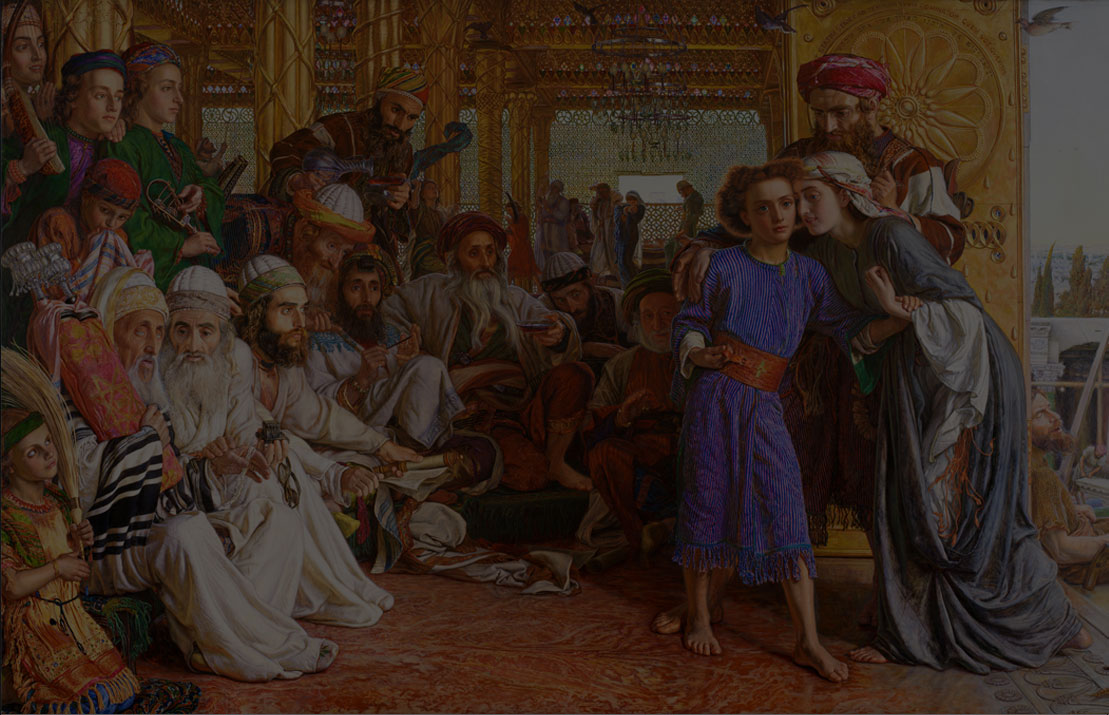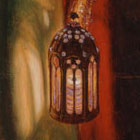In 1851, Hunt the agnostic experienced a spiritual awakening while painting the first version of The Light of the World. The image was based on Revelation 3:20, "Behold, I stand at the door, and knock; if any man hear my voice, and open the door, I will come in to him, and will sup with him, and he with me." Painted in an orchard by moonlight, the picture represents Christ knocking on the door of a garden shed, overgrown with brambles, that symbolizes a human soul. The lantern spreads spiritual light in a darkened world. The apples in the foreground, like the neglected orchard setting, refer to the temptation of Adam and Eve and the "fallen" nature of the world. Hunt's ingenious and optimistic conception was one of the most admired images among Protestants in the 19th century.
The earliest of Hunt’s three versions of The Light of the World is at Keble College, Oxford. The reduced version exhibited here, finished with the help of Frederic Stephens, was shown in New York in 1857 and in Philadelphia in 1858. The third and largest version, now in St. Paul’s Cathedral, London, was painted between 1900 and 1904. The following year it toured the British Empire as far as New Zealand, by way of North America, Africa, and Australia. Today, numerous churches across America have a stained-glass window picturing this subject. But the fame of most of Hunt’s pictorial inventions spread primarily through the lucrative sales of engraved reproductions.



